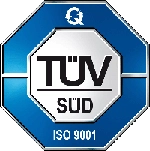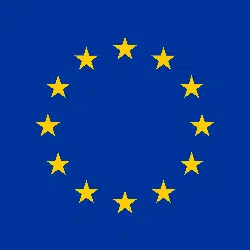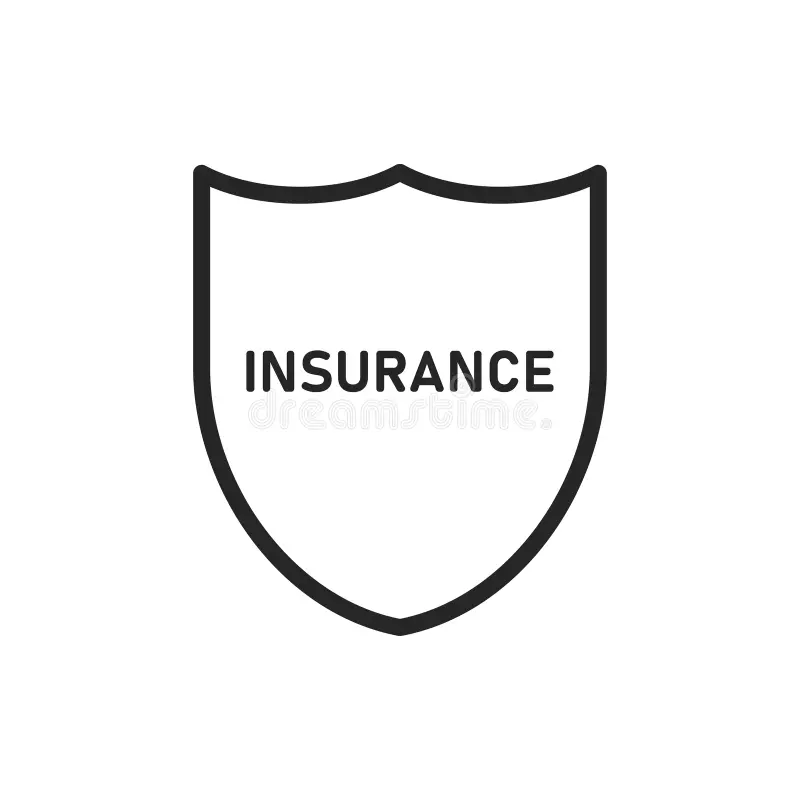In Italy, the flat-rate scheme represents the natural tax system. All the individuals, VAT holders, who exert business activities, individual arts and profession, may benefit from a tax rate up to 5% when complying with the established requirements and do not fall within any ground for exclusion.
Flat-rate scheme: requirements to apply
Who falls under the flat-rate scheme
In Italy, the flat-rate scheme represents the natural tax system. It could be applied by those individuals, VAT holders, in compliance with the following requirements.
The turnover limit in the flat-rate scheme: cash scheme
The first requirement to be respected concerns the turnover limit. The previous fiscal year is always taken as reference. Those who, in the previous year, achieved revenues or received compensation not exceeding 85,000 euros, comply with this requirement. This limit has been increased to 85.000 euros through the Budget Law 2023.
For this purpose, only revenues and fees collected in the tax year will be considered (therefore by 31 December of the reference year).
It is important to note that the 85000 limit has to be intended as proportionate to the months of activity.
Accordingly, if the reference year for verifying the turnover limit is the year in which the business started, the limit will not be 85.000. In fact, to obtain the correct limit, the limit of 85,000 euros should be divided by 365 and then multiplied by the actual days of activity.
E.g.: VAT started on March, 20th 2022.
The limit to be taken into consideration to verify permanence in the flat-rate scheme also for 2023 will be: 66,835 euros (85,000/365 multiplied by 287 days).
Residents abroad cannot apply to 5%-15% flat tax
The second requirement concerns the fiscal residency. Only those who are tax residents in Italy are eligible for the flat-rate scheme.
Exception: Non-residents residing in one of the member states of the EU or in a EEA Country that ensures an adequate exchange of information are eligible for the flat-rate scheme. In this case, it is possible to obtain the flat tax provided that the foreign national produces at least 75% of the total earned income in Italy. Ruling No. 519 of July 28th 2021.
Resolution n. 197/2022 has clarified that those who carry out activities in Italy, which were previously performed abroad, may not apply the 5% flat tax rate. However, they are still eligible for the 15% special flat tax rate.
The flat-rate scheme for employees and retirees
The third requirement concerns those who, in the previous year, received income from employment or pension.
In fact, those who, in the previous year, had a gross income from employment and/or assimilated work exceeding €30.000 cannot apply the flat-rate scheme.
Exception: this limit is not relevant if the employment relationship ended by December, 31st of the previous year.
Flat-rate scheme: invoice to former employer
The fourth requirement concerns those who issue invoices to their former employers. In fact, if the VAT holder taxpayer conducts business mainly with employers with whom there are currently or there had been employment relationships in the previous two tax periods, they will not be eligible for the flat-rate scheme.
The same limit also applies to activity carried out with respect to parties directly or indirectly related to such employers.
Exception: commencement of business after completing the mandatory practice period for the purpose of practicing arts or professions. In this case, VAT holders may issue, even predominantly, invoices to the firm at which they did the professional internship.
Flat-rate scheme and holding in companies
The fifth requirement concerns those who hold corporate interests in:
- Partnerships (in Italian sns and sas), professional organizations or family business,
- Limited Liability Company (LLC – in Italian Srl).
In the first case (a.), VAT holders, as long as they hold even one shareholding in Partnerships (snc and sas), professional organizations or family businesses, cannot apply the flat-rate scheme.
In the second case (b.), the shareholding of the share does not in itself result in exclusion from the scheme. In fact, the exclusion operates only in the case of direct or indirect control of a company engaged in the same economic activity carried out individually. Or yet, an activity that is directly or indirectly related to it.
Both the following conditions must be present for exclusion:
Control of the company (quota held more than 50% of the share capital).
Activity carried out by the company equal to or linked to the activity carried out as a sole proprietor by the partner.
Limit for expenses incurred by the owner for employee or assimilated work
Sixth requirement: in the previous year, no employee expenses exceeding a total gross amount of €20.000 must have been incurred.
Contributing to the above limit are expenses incurred for:
- casual work
- employee work
- remuneration to collaborators, including project workers
- amounts paid as participation profits to associates with a contribution consisting only of labor
- amounts paid for labor services rendered by the entrepreneurs or their family members.
Incompatibility with special schemes for VAT purposes or flat-rate income determination schemes
The seventh requirement is that the VAT holder does not apply one of the special regimes for VAT purposes or flat-rate income determination.
In fact, Such schemes are incompatible with the flat-rate scheme and prevent its application.
The incompatibility of the flat-rate scheme with certain activities
The eighth requirement concerns activities that carry out transactions involving the sale of buildings or portions of buildings, building land or new means of transportation. If these activities are carried out exclusively or predominantly, the flat tax cannot be applied and the ordinary tax regime will be applied.
If you are a VAT holder but do not meet the requirements to access the favorable tax regime at 5%, you might be interested in the latest updates with the 2023 Budget Law on the Flat Tax 15%.
Flat-rate scheme: how it works
VAT holders applying the flat-rate scheme determine income under different rules compared with the ordinary scheme and apply reduced tax and contribution rates.
How income is calculated in the flat-rate scheme: examples
Under the scheme, income is determined through the application of certain profitability coefficients to income and fees received. The profitability coefficients vary depending on the activity performed (ATECO code), set out in Annex No. 2 to Law No. 145/2018.
| Group of activity | ATECO Codes | Profitability coefficient |
| Food and beverage industries | (10-11) | 40% |
| Wholesale and retail | 45- (from 46.2 to 46.9) – (from 47.1 to 47.7) – 47.9 | 40% |
| Itinerant trading of food and beverages | 47.81 | 40% |
| Itinerant trading of other products | 47.82-47.89 | 54% |
| Construction and real estate activities | (41-42-43) – (68) | 86% |
| Trade intermediaries | 46.10 | 62% |
| Accommodation and food service activities | (55-56) | 40% |
| Professional, scientific, technical, health, education, financial activities and insurance and financial services | (64-65-66) – (69-70-71-72-73-74-75) – (85) – (86-87-88) | 78% |
| Other economic activities | (01-02-03) – (05-06-07-08-09) – (12-13-14-15-16-17-18-19-20-22-22-23-24-25-26-27-28-29-30-31-32-33) – (35) – (36-37-38-39) – (49-50-51-52-53) – (58-59-60-61-62-63) – (77-78-79-80-81-82) – (84) – (90-91-92-93) (94-95-96) – (97-98) – (99) | 67% |
In addition, Social Security contributions paid in the tax year can be deducted from the income thus calculated.
E.g.: The owner of a professional business (example, a doctor, ATECO code 86.22.01) collected total annual fees of €50.000 and paid €10.000 to the membership fund. The coefficient of 78% is applied to the compensation received, and the social security contributions paid are then deducted.
The taxable taxable income is:
(50.000*78%)-10,000 = €29.000
Flat-rate scheme taxation
The flat-rate scheme provides for a one-time tax of 15%. It is a substitute tax for the following taxes: Irpef, regional surtax, municipal surtax and Irap.
Therefore, the 15% rate is applied to the income calculated as in the previous point, once Social Security contributions are deducted.
The 5% Flat Tax
The substitute tax applied to the flat-rate scheme is reduced to 5% for the first 5 years of operation. In order to obtain this reduction, the following requirements must be met:
First requirement – 5% Startup: the VAT holder must not have engaged in artistic, professional or business activity in the previous 3 years. The Limit also operates in the case of activity carried out as an associate or family business.
Second requirement – 5% Startup: The activity exercised must not represent mere continuation of another activity previously carried out in the form of employment or self-employment.
Exception: the period of compulsory practice for the purpose of practicing arts or professions is not considered for this purpose.
Third requirement – 5% Startup: if the activity was previously carried out by another person, the amount of related revenues and fees earned in the previous tax period must not exceed the turnover limit required for access to the scheme
Example of tax calculation flat-rate scheme
On the basis of the abovementioned example about the professional practicing as a medic (ATECO Code 86.22.01), if the following data are assumed:
Total annual compensation: €50.000. Payments to the membership fund: €10.000.
The taxable taxable income turns out to be:
(50,000*78%)-10.000 = €29.000
A 15% substitute tax or, if the requirements are met, a 5% substitute tax is applied to this taxable amount.
Tax payable 15%: €4.350
Tax requirements 5% startup: €1.450
Duration of the flat-rate scheme
The flat-rate scheme represents the natural regime for all taxpayers individuals who are VAT-registered, individually engaged in business, art or profession, meeting the requirements.
Conversely, the application of the 5% reduced rate for new business has a limited duration. It can only be applied for a period of 5 years. After the 5-year period, the rate changes to 15%.
Events in which you may lose the flat-rate scheme
Therefore, the scheme is maintained until one of the causes of exclusion occurs. Disqualification from the scheme begins from the subsequent year in which a cause for disqualification arises or one of the requirements ceases to apply.
Please pay attention: in the event that revenues and compensation in excess of €100.000 are received, the regime lapses already from current year.
In fact, the 2023 Budget Law includes the anti-avoidance clause among the new features of the flat-rate scheme. It stipulates that if the income exceeds €100.000, the entire income of the year will be taxed at ordinary Irpef rates, and all income/fees exceeding €100.000 will be subject to VAT.
Invoice in the flat-rate scheme: obligatory e-invoicing
How to fill out the invoice in the flat-rate scheme
The invoice issued by a taxpayer under the flat-rate scheme will not have VAT displayed since the simplifications include non-taxability for VAT purposes.
This involves the obligation to:
- Insert the reference of Law that assumes its non-taxability: “Transaction not subject to VAT as provided for in Art.1 of Law 190/2014 (Flat-rate tax scheme) and subsequent modifications and integrations”;
- Affix the 2 euro revenue stamp in case of amounts exceeding €77.47.
In addition, the remuneration due to VAT holders engaged in a professional activity under the flat-rate scheme is not subject to withholding tax. Hence the obligation to:
- Insert the reference of Law governing its non-liability: “Amount subject to substitute tax and therefore not subject to withholding tax as provided for in Art.1 of Law 190/2014 (Flat-rate tax regime) and subsequent modifications and integrations”.
Should those under the flat-rate scheme issue an electronic invoice?
As of July 1st, 2022, VAT holders who apply the flat-rate scheme are also obliged to send invoices electronically to the ADIS if they received revenue or compensation of more than €25.000 in the previous year.
Please note that the limit of 25,000 is grouped per year.
Therefore, if the base year for checking the limit is the year in which the business started, the limit will not be 25.000. In fact, to obtain the correct limit the €25.000 limit has to be divided by 365 and then multiply by the actual days of activity.
it is important to be aware that for those who exclusively send electronic invoices, even though they are not required to do so, there is a bonus scheme. In fact, in these cases, the time limit for service of assessment notices is reduced by one year (becoming 4 years instead of 5).
As of January 1, 2024, all taxpayers adopting the flat-rate scheme will be required to send invoices electronically.
Simplifications and obligations for taxpayers under the flat-rate scheme
Those who adopt the flat-rate scheme have several simplifications for VAT and direct tax purposes.
Flat-rate scheme and VAT
Under the flat-rate scheme:
- taxpayers do not charge VAT on the invoice (but on the other hand do not deduct the VAT charged on purchases),
- they are exempt from value added tax settlement and payment obligations,
- they are exempt from the obligation to file quarterly periodic liquidations (in Italian LIPE) and the annual VAT return,
- they are not required to record issued invoices, receipts and purchases.
Simplification for income tax purposes
Under the flat-rate scheme:
- taxpayers are exempt from registration and record-keeping requirements,
- they are excluded from the ISA (synthetic indices of reliability) calculation
- they do not play the role of tax withholding agent and do not withhold from professionals. They operate withholding taxes only on employee income and income treated as such. Through the tax return, they must indicate the tax code of those who received income for which withholding was not made and the amount of the income.
- income and fees received are not subject to withholding tax.
What are the obligations for those who adopt the flat-rate scheme?
However, taxpayers under the flat-rate scheme must fulfill certain obligations:
- Invoices issued and customs bills should be numbered and retained
- The requirement to certify fees remains
- In the case of transactions for which they owe tax there is an obligation to supplement the invoice with the payable VAT, which must then be paid by the 16th of the subsequent month. As an example: A titolo di esempio: fattura ricevuta da uno stato estero senza l’applicazione dell’iva nel rispetto del principio di territorialità. Oppure fattura ricevuta per interventi in edilizia che applicano il meccanismo del reverse charge.
Or invoice received for construction work applying the reverse charge mechanism.
In these cases, the taxpayer must supplement the invoice received with the required vat rate and pay the tax on the 16th of the following month without being able to then deduct it. - Obligation of e-invoicing if the legal requirements are met. Issuance in all cases of e-invoice to the public administration.
When is the flat-rate scheme worthwhile? Ordinary vs. flat-rate regime
The flat-rate scheme, as seen, provides a number of accounting and tax simplifications in addition to a reduced tax rate of 15% (or 5% in the case of start-ups for the first 5 years). Before opting for this preferential scheme, its limitations and disadvantages should also be evaluated.
The most relevant ones are summarized below:
- Costs incurred inherent to the activity cannot be deducted. A flat-rate reduction is applied by applying the coefficient of profitability.
- VAT paid on purchases cannot be deducted.
- From the income produced under the flat-rate scheme, it is not possible to deduct the charges referred to in Article 10 of the TUIR (e.g.: periodic allowances paid to a spouse, contributions paid to social security pension forms, contributions paid for domestic workers, etc.).
- The flat-rate scheme provides a tax in lieu of Irpef. Therefore, expenses under Art. 12, 13, 15 and 16 TUIR (e.g., dependent child deduction, medical expenses, mortgage interest, etc.) as well as those under Art. 16 bis of TUIR and related to Bonuses provided for building interventions cannot be deducted.
- The flat-rate scheme seems to be incompatible with the impatriate scheme, which may have a more favorable taxation, meeting the requirements.
Example of convenience calculation: when the flat-rate scheme is not convenient
Resuming the case presented above. A professional doctor engaged in practicing medicine:
- compensation received: 50.000
- Activity-related costs of 15.000
- Payments to membership fund: 10.000
- Renovation expense deduction – annual fee: 5.000
- Taxes flat-rate scheme: ((50.000*78%)-10.000)*15% = €4.350
- Ordinary regime taxes:
- Taxable income: 50.000-15000-10.000 = €25.000
- Gross tax (15.000*23%)+(10.000*25%) – 602 = €5.348
- Net tax (net of deductible expenses) = €348
In the proposed case, due to the deductible expenses, the taxpayer would have an advantage to apply the ordinary scheme.
The personal income tax (Irpef) paid of 348 euros would be less than the flat-rate scheme’s substitute tax. This is because, under the flat-rate scheme, deductible renovation expenses would not find tax capacity and would be lost.
Social security contributions in the flat-rate scheme
Taxpayers who apply the flat-rate scheme, in addition to a flat tax of 15% to 5% benefit in some cases from a reduction in social security contributions payable.
This benefit only applies to those who are engaged in business as an enterprise and are registered with INPS artisans and merchants.
A 35% reduction on the payment of Inps social security contributions is provided for these individuals.
This reduction is not mandatory, but it is up to the entrepreneur whether or not to apply for the contribution reduction.
Deadline for applying for reduced social security contributions under the flat-rate scheme
The Inps application for the reduced contribution must be submitted:
- When starting a business, promptly with respect to the receipt of the registration order and in any case by the first payment deadline,
- In other cases no later than February 28th.
Please note that it is not necessary to submit the application every year.
It is also possible to revoke the choice of Inps contribution reduction, but once revoked, it will no longer be possible to have another contribution reduction in the future.



















